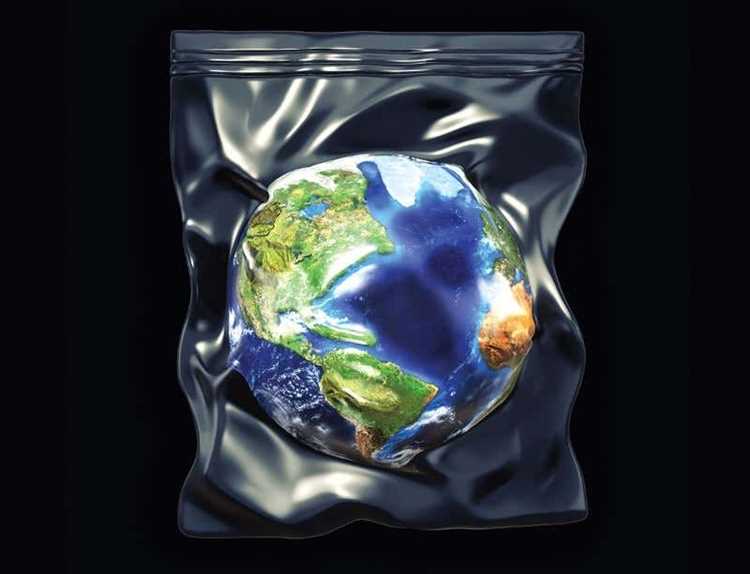
Plastic has become an integral part of our modern lives, but have you ever wondered what happens to all the plastic that we discard?
Plastic decomposition, or the breakdown of plastic materials into smaller fragments, is a complex process influenced by various factors such as exposure to sunlight, temperature, and the type of plastic. While plastic is known for its durability, it is not biodegradable in the traditional sense.
One of the major concerns surrounding plastic is its long lifespan. Estimates suggest that certain types of plastic can remain in the environment for hundreds, if not thousands, of years. This creates a significant environmental problem as plastic waste continues to accumulate in landfills, oceans, and other natural habitats.
Understanding the decomposition of plastic is crucial for developing effective strategies to mitigate its environmental impact. In this article, we will delve deep into the world of plastic decomposition, exploring the different types of plastics, their decomposition rates, and the potential consequences of plastic pollution. Join us on this journey as we unravel the mysteries of how long Earth’s plastic will last.
- Why is Plastic Pollution a Major Environmental Concern?
- The Longevity of Plastic Waste in the Natural Environment
- The Future of Plastic Waste
- The Importance of Individual Actions
- The Impact of Plastic on Wildlife and Ecosystems
- 1. Entanglement and Injury
- 2. Ingestion and Starvation
- 3. Habitat Destruction
- Understanding Plastic Decomposition
- Type of Plastic
- Environmental Factors
- The Factors Affecting the Breakdown of Plastic
- The Role of Microorganisms in Plastic Degradation
- Microbial Communities
- Enzymatic Breakdown
- Environmental Factors
- The Potential for Biodegradation
- Finding Solutions to Plastic Pollution
- Increase Plastic Recycling
- Reduce Single-Use Plastics
- Question-answer:
- What is plastic decomposition?
- How long does it take for plastic to decompose?
- What are the environmental impacts of plastic decomposition?
- What can be done to reduce plastic decomposition?
- Why is plastic decomposition a global issue?
- What is the article “How Long Will Earth’s Plastic Last: A Deep Dive into Plastic Decomposition” about?
- Why is plastic decomposition an important issue?
Why is Plastic Pollution a Major Environmental Concern?
Plastic pollution is a significant environmental concern due to its long-lasting presence and harmful effects on ecosystems and human health. The durability of plastic means that it can persist in the environment for hundreds of years, polluting land, water, and air. This pollution poses a threat to both terrestrial and marine life, as animals can mistake plastic for food and become entangled in it, leading to injury or death.
Plastic pollution also contaminates waterways and oceans, negatively impacting marine ecosystems. As plastics break down into smaller particles called microplastics, they can enter the food chain, with potential consequences for human health. These tiny plastic particles have been found in marine organisms, such as fish and shellfish, and have the potential to accumulate in the tissues of animals and humans who consume them.
Additionally, the production and disposal of plastic contribute to greenhouse gas emissions and energy consumption. The extraction and manufacturing processes for plastics rely heavily on fossil fuels, which contribute to climate change. Improper disposal of plastic waste, such as incineration or landfilling, can release harmful pollutants into the air and leach toxins into the soil and water.
Plastic pollution has become a global issue, impacting regions across the globe. It requires urgent attention and action from individuals, businesses, and governments to reduce plastic consumption, improve waste management systems, and promote the use of sustainable alternatives. By addressing plastic pollution, we can protect ecosystems, reduce harm to wildlife, and mitigate the negative impacts on human health and the environment.
The Longevity of Plastic Waste in the Natural Environment
Plastic waste has become one of the most pressing environmental issues of our time. Although it offers convenience and versatility in everyday life, the long-term impact of plastic on the natural environment is cause for concern.
Plastic is not biodegradable and does not break down easily. In fact, it can take hundreds of years for plastic to decompose in the natural environment. This means that every piece of plastic waste we produce today will outlast us and impact future generations.
One of the reasons plastic takes so long to decompose is due to its chemical structure. Most plastic products are made from petroleum, a non-renewable resource. The chemical bonds in plastic are strong and resistant to natural processes that break down other materials.
In addition to its durability, plastic waste poses a threat to wildlife and ecosystems. Marine animals often mistake plastic debris for food and ingest it, causing physical harm and sometimes death. Plastic waste also disrupts the balance of ecosystems, as it accumulates in water bodies and on land, leaching harmful toxins into the environment.
Efforts to reduce plastic waste are essential in mitigating its long-term impact. This includes reducing single-use plastics, promoting recycling and proper waste management, and advocating for alternatives to plastic packaging. It is crucial that we understand the longevity of plastic waste and work towards sustainable solutions to prevent further damage to our environment.
The Future of Plastic Waste
As we continue to produce and dispose of plastic waste at an alarming rate, it is essential to consider the long-term consequences of our actions. Without significant changes in our consumption and disposal habits, plastic waste will continue to accumulate and have far-reaching effects on the natural environment.
Scientists and environmental organizations are working towards finding innovative solutions to tackle the plastic waste problem. This includes developing biodegradable plastics, exploring alternative materials, and improving waste management systems. However, these solutions require collective action and a shift towards a more sustainable and responsible approach to plastic use.
The Importance of Individual Actions
While systemic change is crucial, individual actions can also make a significant difference in reducing plastic waste. Simple steps such as using reusable bags, bottles, and utensils, avoiding single-use plastics whenever possible, and properly disposing of plastic waste can help minimize our impact on the environment. By making conscious choices in our daily lives, we can contribute to a cleaner and healthier future for our planet.
It is time to recognize the lasting impact of plastic waste and take proactive steps to address this global issue. By understanding the longevity of plastic waste and working towards sustainable solutions, we can protect our natural environment and create a better future for generations to come.
The Impact of Plastic on Wildlife and Ecosystems
Plastic pollution has a devastating impact on wildlife and ecosystems around the world. As the production and consumption of plastic continue to increase, so does its negative effect on our natural environment. Here, we will explore the various ways in which plastic affects wildlife and ecosystems.
1. Entanglement and Injury
One of the most direct impacts of plastic on wildlife is entanglement. Animals such as sea turtles, seals, and birds often become entangled in plastic debris, which can cause severe injuries and even death. Fishing nets, plastic bags, and six-pack rings are particularly hazardous, as they can ensnare animals and restrict their movement, leading to suffocation or starvation. This problem is widespread and affects both marine and terrestrial species.
2. Ingestion and Starvation
Plastic pollution also poses a significant threat to wildlife through ingestion. Many animals, including fish, seabirds, and marine mammals, mistake plastic debris for food and ingest it. This can lead to a variety of health issues, including digestive blockage, malnutrition, and starvation. Microplastics, tiny fragments of plastic less than 5mm in size, are of particular concern because they can accumulate in the guts of marine organisms and disrupt their ability to absorb nutrients.
| Type of Plastic | Impact on Wildlife |
|---|---|
| Plastic Bags | Can suffocate animals or be mistaken for prey |
| Plastic Bottles | Can trap small animals or contaminate drinking water sources |
| Plastic Packaging | Can entangle marine life or fill their stomachs, causing malnutrition |
3. Habitat Destruction
Plastic pollution not only harms individual animals but can also have far-reaching consequences for entire ecosystems. When plastic waste accumulates in habitats such as coral reefs, forests, or rivers, it degrades their quality and disrupts essential ecological processes. Plastic debris can smother corals, suffocate plants, contaminate water sources, and alter the natural balance of ecosystems. This can lead to the loss of biodiversity and the decline of various species that depend on these habitats for survival.
In conclusion, the impact of plastic on wildlife and ecosystems is significant and alarming. The widespread use and improper disposal of plastic products have resulted in the pollution of our natural environment, causing harm to countless species and ecosystems. It is crucial for individuals, communities, and governments to take action to reduce plastic consumption, promote recycling, and find sustainable alternatives. Only through collective efforts can we mitigate the destructive effects of plastic pollution and preserve the health of our planet.
Understanding Plastic Decomposition
Plastic decomposition is the process by which plastic materials break down into smaller pieces or degrade over time. It is important to understand the mechanisms and factors that influence plastic decomposition because of the significant environmental impact plastic waste has on the planet.
There are several factors that affect the decomposition of plastics, including the type of plastic, exposure to sunlight, temperature, and the presence of microorganisms. Different plastics have varying levels of biodegradability, with some types taking hundreds or even thousands of years to decompose.
Type of Plastic
Not all plastics are created equal when it comes to decomposition. Some plastics, like polyethylene terephthalate (PET) and high-density polyethylene (HDPE), are relatively more resistant to decomposition. On the other hand, plastics like polyvinyl chloride (PVC) and polystyrene (PS) take longer to break down, posing a significant challenge in terms of waste management.
Environmental Factors
Environmental factors play a crucial role in the decomposition process. Exposure to sunlight can accelerate the breakdown of plastics, as ultraviolet (UV) radiation weakens the chemical bonds. Temperature also affects decomposition, with higher temperatures generally speeding up the process. Additionally, the presence of microorganisms, such as bacteria and fungi, can contribute to plastic degradation.
It is important to note that while plastic decomposes, it does not fully disappear from the environment. Instead, it breaks down into smaller particles known as microplastics. These microplastics can persist in the environment for long periods and can have detrimental effects on marine life, ecosystems, and even human health.
In conclusion, understanding the decomposition process of plastics is crucial for developing effective strategies to mitigate plastic waste and its environmental impacts. By considering the type of plastic, environmental factors, and the persistence of microplastics, we can work towards finding sustainable solutions to reduce plastic pollution and protect our planet.
The Factors Affecting the Breakdown of Plastic
Plastic decomposition, also known as plastic degradation, is a complex process influenced by multiple factors. Understanding these factors is crucial in predicting the longevity of plastic and its environmental impact. Here are some key factors that affect the breakdown of plastic:
- Type of Plastic: Different types of plastics have varying chemical compositions and structures, which determine their degradation rate. Some plastics, like polyethylene terephthalate (PET), can take hundreds of years to decompose, while others, like polylactic acid (PLA), may decompose more quickly under certain conditions.
- Exposure to Sunlight: Ultraviolet (UV) light from the sun can accelerate the breakdown of certain plastics through a process called photodegradation. This is particularly true for plastics that contain additives like UV stabilizers.
- Temperature: High temperatures can speed up the chemical reactions that lead to plastic degradation. Conversely, colder temperatures may slow down the breakdown process.
- Moisture: Moisture can facilitate the breakdown of some plastics, especially those that are hydrophilic and absorb water. Water can weaken the polymer chains, making it easier for enzymes and microorganisms to break them down.
- Mechanical Stress: Repeated mechanical stress, such as bending, grinding, or fragmentation, can physically break down plastics into smaller pieces. These smaller pieces may degrade more rapidly due to increased surface area.
- Chemical Exposure: Exposure to certain chemicals, such as solvents or acidic substances, can accelerate the breakdown of plastic. Chemical reactions can weaken the polymer chains and make them more susceptible to degradation.
- Presence of Microorganisms: Microorganisms, such as bacteria and fungi, can play a crucial role in plastic degradation. They secrete enzymes that break down the polymer chains and utilize the plastic as a carbon source. However, the presence and abundance of these microorganisms can vary depending on the environment.
- Size and Shape of Plastic: The size and shape of plastic items can affect how quickly they decompose. Smaller plastic fragments have a larger surface area-to-volume ratio, allowing for more exposure to environmental factors, while larger items may remain intact for longer periods.
By considering these factors, scientists and researchers can better understand the decomposition process of plastic and develop strategies to mitigate plastic pollution. Finding ways to reduce plastic waste and promote the use of biodegradable alternatives is essential to safeguarding our environment for future generations.
The Role of Microorganisms in Plastic Degradation
The decomposition of plastic materials is a complex process that involves the action of various microorganisms. These microorganisms play a crucial role in breaking down plastic and turning it into smaller, more manageable compounds.
Microbial Communities
Microorganisms such as bacteria and fungi are naturally present in the environment, including soil, water, and air. These microorganisms have developed the ability to digest and metabolize a wide range of organic materials, including plastics.
In recent years, scientists have discovered that certain microorganisms have evolved the capability to degrade plastic. These specialized microorganisms, known as plastic-degrading microorganisms, produce enzymes that can break down the chemical bonds in plastic polymers.
Enzymatic Breakdown
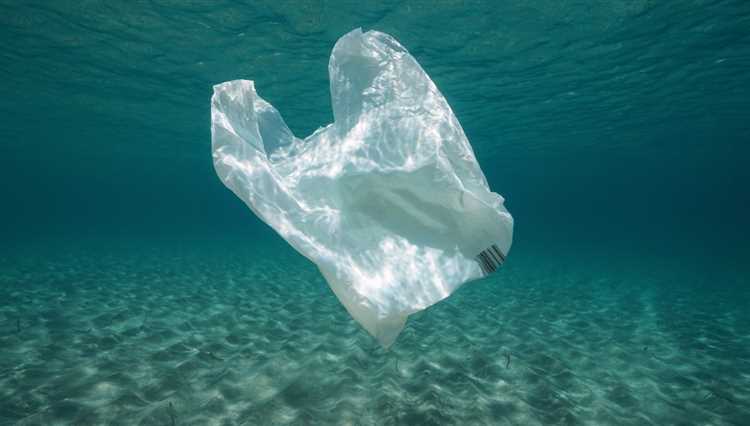
The enzymes produced by plastic-degrading microorganisms act as biological catalysts, speeding up the degradation process. These enzymes target specific chemical bonds in the plastic polymer, causing them to break and release smaller molecules.
Once the chemical bonds are broken, other microorganisms in the environment can further degrade the resulting smaller compounds. This creates a cascade effect, where different microorganisms work together to break down plastic into even smaller units.
Environmental Factors
The rate of plastic degradation by microorganisms is influenced by various environmental factors. Temperature, moisture, and nutrient availability all play a role in determining the rate at which plastic materials decompose.
In addition, the type and composition of the plastic material itself can affect microbial degradation. Some plastics, such as polyethylene terephthalate (PET), are more easily degraded by microorganisms compared to others.
The Potential for Biodegradation
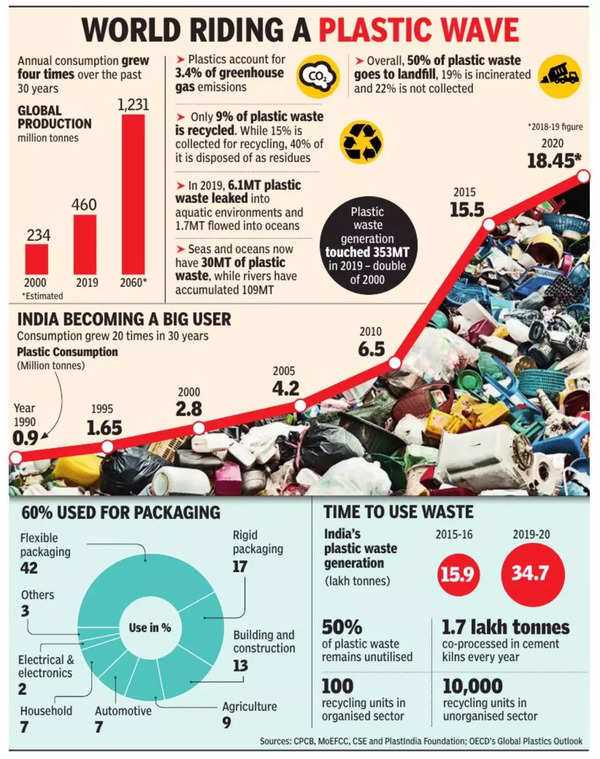
The discovery of plastic-degrading microorganisms has raised hopes for finding sustainable solutions to the plastic pollution problem. By harnessing the power of these microorganisms, scientists are exploring methods to accelerate the biodegradation of plastic waste.
This research includes developing biodegradable plastics that can be broken down by microorganisms more readily. Additionally, scientists are studying how to optimize the conditions for microbial degradation, such as creating microbial consortia that work synergistically to break down plastic more efficiently.
- Overall, the role of microorganisms in plastic degradation is a promising area of research that holds potential for mitigating the environmental impact of plastic waste.
- Understanding the mechanisms behind microbial degradation of plastics can assist in the development of innovative solutions for plastic waste management.
- Further studies are needed to fully harness the potential of microorganisms and develop effective strategies to combat plastic pollution.
Finding Solutions to Plastic Pollution
Plastic pollution is a pressing global issue that requires immediate attention and action. As plastic waste continues to accumulate in our oceans, rivers, and landfills, it poses a significant threat to marine life, ecosystems, and human health. Fortunately, various solutions are being developed and implemented to address this problem.
Increase Plastic Recycling
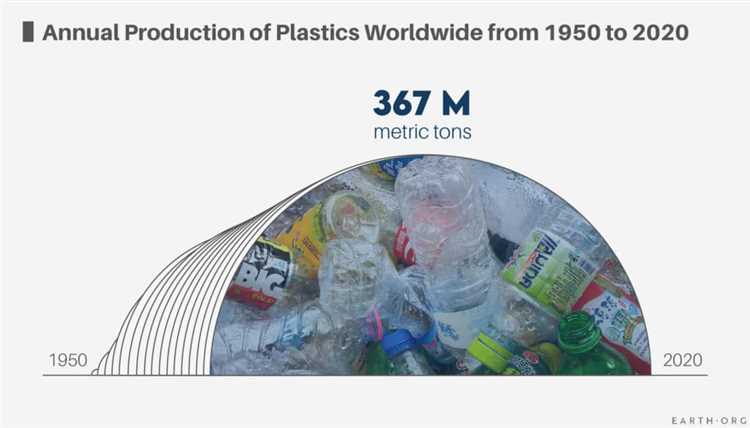
One of the most effective ways to reduce plastic pollution is to increase the recycling rate of plastic waste. Governments and organizations can invest in better recycling infrastructure and technologies, promote awareness about the importance of recycling, and implement policies that encourage the use of recycled plastic materials in manufacturing processes.
Reduce Single-Use Plastics
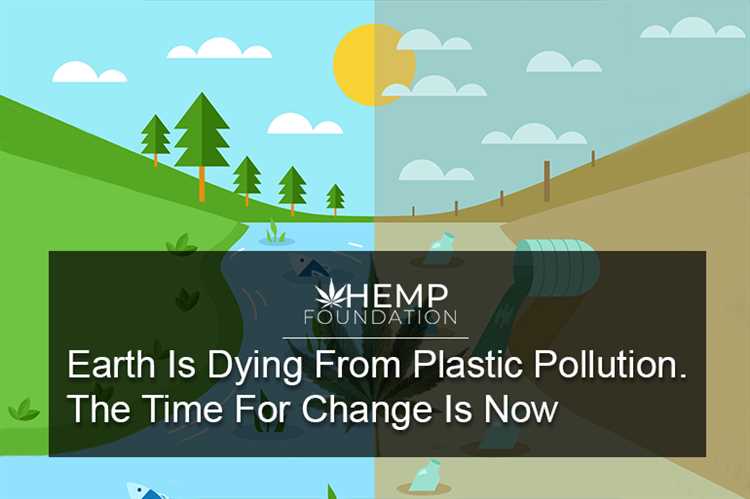
Single-use plastics, such as plastic bags, bottles, and straws, are major contributors to plastic pollution. Encouraging the use of reusable alternatives, promoting the adoption of biodegradable or compostable materials, and imposing restrictions or bans on single-use plastics are crucial steps towards reducing plastic waste.
| Solution | Description |
|---|---|
| Introduce Plastic Packaging Regulations | Implement strict regulations on plastic packaging, such as mandating the use of eco-friendly and recyclable packaging materials, reducing excessive packaging, and promoting sustainable packaging practices. |
| Invest in Research and Innovation | Support research and development of alternative materials to plastic, such as bioplastics or natural fibers, that are more sustainable and eco-friendly. |
| Improve Waste Management Systems | Develop and implement efficient waste management systems that prioritize recycling, composting, and waste-to-energy conversion, reducing the amount of plastic waste that ends up in landfills or pollutes the environment. |
| Educate and Engage the Public | Raise public awareness about the impacts of plastic pollution and provide information on sustainable practices, recycling techniques, and how individuals can reduce their plastic consumption. |
These solutions should be implemented simultaneously and supported by global collaborations and partnerships. By taking collective action, we can work towards mitigating plastic pollution and preserving the health of our planet for future generations.
Question-answer:
What is plastic decomposition?
Plastic decomposition refers to the breakdown of plastic materials into smaller pieces and eventually into microplastics or even nanoplastics, which are microscopic and can contaminate the environment.
How long does it take for plastic to decompose?
The decomposition time of plastic varies depending on the type of plastic. For example, it can take hundreds of years for a plastic bottle to decompose, while a plastic bag might take around 10-20 years.
What are the environmental impacts of plastic decomposition?
The environmental impacts of plastic decomposition are significant. Microplastics and nanoplastics can contaminate water sources and soil, harming marine life and terrestrial organisms. Plastic debris also contributes to the pollution of oceans, damaging ecosystems and affecting wildlife.
What can be done to reduce plastic decomposition?
There are several ways to reduce plastic decomposition. First, reducing the usage of single-use plastics and opting for reusable alternatives can help. Recycling plastic waste is also important, as it prevents plastic from ending up in landfills or the environment. Additionally, promoting awareness and education about the environmental impacts of plastic can encourage individuals and businesses to take action to reduce plastic waste.
Why is plastic decomposition a global issue?
Plastic decomposition is a global issue because plastic waste is produced and discarded on a massive scale worldwide. Plastic debris can travel through waterways and oceans, affecting not only local environments but also regions far away from the original source of pollution. The presence of microplastics in the food chain also raises concerns for human health.
What is the article “How Long Will Earth’s Plastic Last: A Deep Dive into Plastic Decomposition” about?
The article explores the topic of plastic decomposition and how long it takes for plastics to break down in the environment.
Why is plastic decomposition an important issue?
Plastic decomposition is important because plastics take a long time to break down, which leads to significant environmental pollution and harm to wildlife.